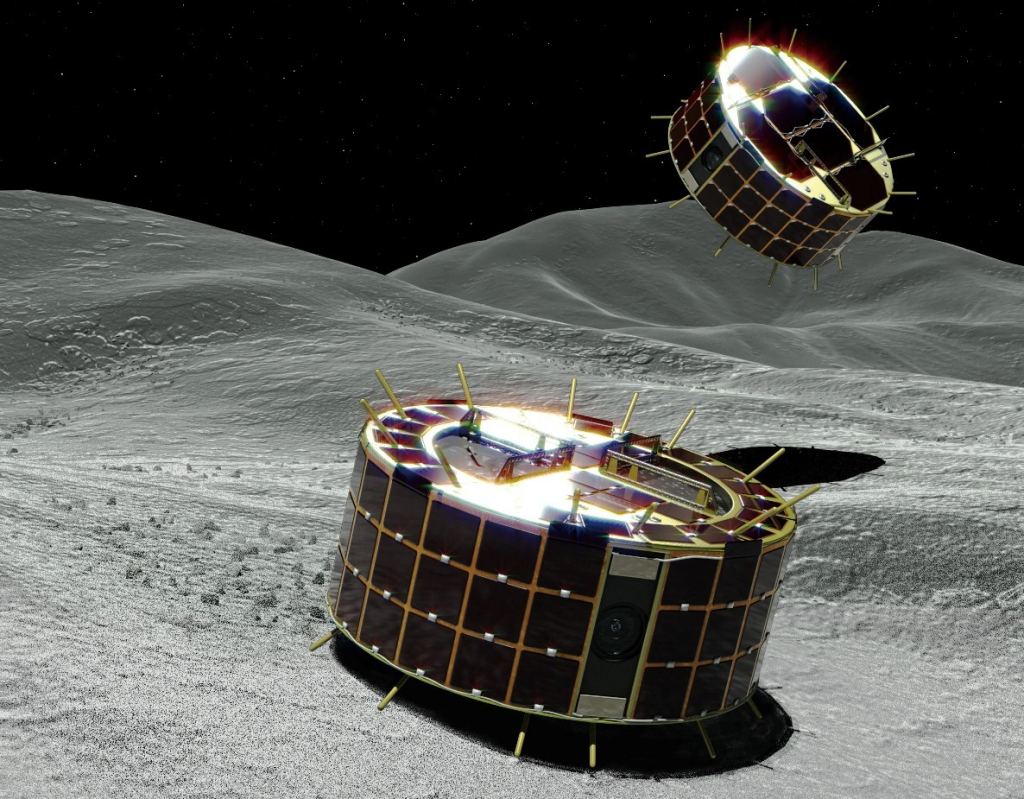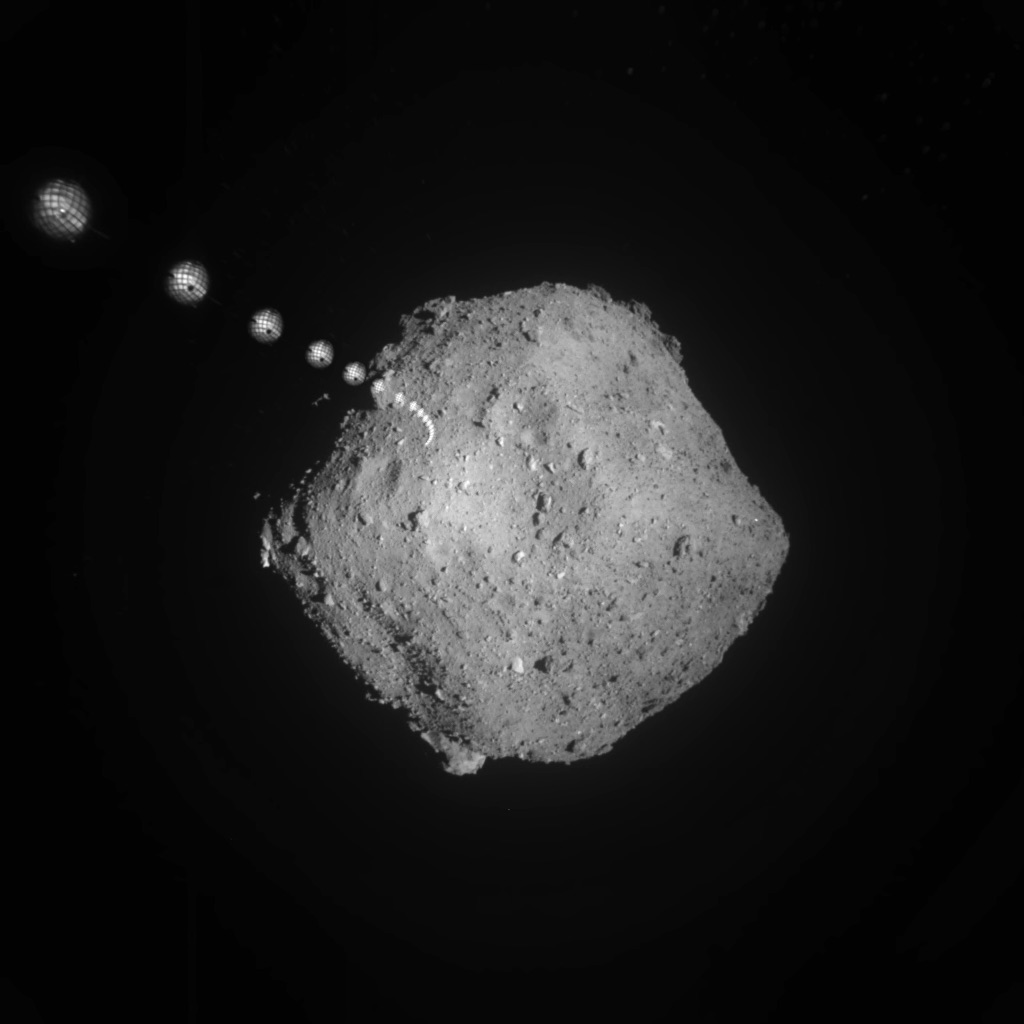On June 27th, 2018, the Japanese Aerospace Exploration Agency‘s (JAXA) Hayabusa2 spacecraft reached asteroid 162173 Ryugu. As part of JAXA’s program to study Near-Earth Asteroids (NEAs), this mission has spent over a year conducting landing operations, shooting up the surface with “bullets” and an anti-tank warhead, and collecting samples from the surface and interior that will eventually be returned to Earth.
This past Monday (Sept. 16th), Hayabusa2 released two target markers as part of its “target marker separation operation” (which ran from Sept. 12th to Sept. 17th). This consisted of two 10 cm (4 in) balls covered in reflective material being released in orbit around Ryugu. This operation puts the mission a step closer to the deployment of the mission’s MINERVA-II2 Rover-2, which will be landing on the asteroid’s surface next month.
Originally scheduled for Sept. 5th, the operation was postponed due to an abnormality that was detected in one of the spacecraft’s reaction wheels. Once the issue was resolved, the mission team brought the spacecraft to an altitude of about 1 km (3,300 feet) from the surface of Ryugu, where the two target markers were deployed to equatorial and polar orbits (respectively).
On Monday, at 10:37 AM local time (02:37 AM PST; 05:37 Tuesday EST) JAXA announced their success on the mission’s official Twitter account. They also posted time-lapse photos of the target markers falling towards the surface, which slowed a slight parabolic arc to their descent. Professor Makoto Yoshikawa, Hayabusa 2’s mission manager at JAXA, also issued a statement about the agency’s success.
As Makoto said during a press briefing at the European Planetary Science Congress (which is still taking place in Geneva, Switzerland):
“We released two target markers from an altitude of about 1 kilometer, and these images were just released. The purpose of this release is a rehearsal of the release of the MINERVA-II-2 small rover next month… We can observe the target marker’s orbit around Ryugu and we can then determine the gravity field of Ryugu in detail, so this is a new operation.”
After that, the spacecraft ascended to an altitude of 20 km (12.4 mi) above the surface of Ryugu. From that position, the spacecraft’s optical camera will continuously observe the target markers as they orbit and slowly descend towards Ryugu. Thanks to the reflective coating on the markers, their trajectories as they orbit and descend will be easily monitored.
This phase of the mission is known as the “Target marker orbit observation operation”, which will continue until Sept. 23rd (when the TMs are expected to reach the surface). In the end, the purpose of the TMs is to act as navigation aids, which will help the mission controllers prepare for the deployment of Hayabusa2‘s MINERVA-II2 rover (aka. ROVER-2), which is scheduled to take place in October.

Like the previous MINERVA-II rover (ROVER-1), ROVER-2 will land on the surface, hop around to relocate, and conduct science operations with its suite of scientific instruments – which include two cameras, a thermometer, and an accelerometer. This represents the final phase of Hayabusa2‘s science campaign at Ryugu – which will end this December, followed by the spacecraft returning to Earth (arriving by December 2020).
All told, the spacecraft will have deployed three mobile landers to explore the surface of Ryugu, which consists of the two MINERVA-II rovers and the larger Mobile Asteroid Surface Scout (MASCOT). This lander was developed by the German Aerospace Center (DLR) and France’s National Center for Space Studies (CNES) and landed on Ryugu’s surface with ROVER-1 in September of 2018 (where it explored for 17 hours before its battery died.
It has also conducted a number of landings to gather samples for return to Earth. These will be studied extensively by scientists to learn more about the early history of the Solar System. This could offer clues as to how water was distributed and (assuming organic matter is found) how and when life emerged as well.
“If we have 0.1 grams (of material), we can do all the sample analysis, but we hope we will have much more,” said Yoshikawa. “We want to study the organic matter on Ryugu because we want to know the origin of life on the Earth, and we think Ryugu has
Further Reading: JAXA, SpaceFlight Now

